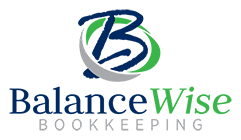Done for You Bookkeeping Service
- Reconcile credit card and bank statements
- Maintain data feeds into your accounting application
- Issue monthly report on transaction trends and suggested improvements
Have you ever wondered what a day in the life of a bookkeeper looks like as we do your bookkeeping?
There are basically 7 steps to getting to where we are delivering three core reports, interpreting them, and offering suggestions for improvement on how clients can make their financial situation better.
- Classify & record transactions
- Reconcile transactions
- Make adjustments
- Produce draft financial statements (for us not the client)
- Review & correct draft financials
- Finalize financial statements so they look pretty
- Present the financial statements and have a conversation with each client about them in laymen’s terms, interpreting and suggesting improvements.
On a daily basis we spend the majority of our time categorizing transactions and writing bank rules to get everything automated where the bank feeds are coming into the accounting software that we use.
On a monthly basis we pull bank, credit card and merchant statements and reconcile them, looking for any red flags, which are any differences from what we usually see, or strange spending habits. We ask ourselves, “How can I help these business owners?” Then we contact each client to see if they have any questions we can answer. We provide unlimited email support, and 15 minutes of phone support once a month.
We keep track of when taxes are due and remind clients, so on a quarterly basis they can file Form 1040-ES, the Estimated Tax for Individuals, when applicable. We pull income statements for the correct time frame so clients can see what they made during that period. We also like to set revenue & profit goals for the following quarter.
On a yearly basis we contact our client’s CPA, make any required adjustments, and close out the year.
There are very few tools in our toolbox to provide this service:
The Journals – The bookkeeping cycle starts with financial transactions that go into journals. When sales are made on account, meaning no cash was received and a receivable was created, accounts receivable transactions are recorded in the sales journal. The two most common types of cash journals are the cash disbursements journal and the cash receipts journal. Once all transactions are in a journal, they feed into the ledger.
The Ledger – The set of accounts for a business which feeds into the trial balance. The most common subsidiary ledgers used are the accounts payable ledger and the accounts receivable ledger
The Chart of Accounts – The listing of all accounts used by a business to record and classify financial transactions.
The 3 core reports which make up the financial statement are:
The Trial Balance is a two-column summary of all the debits and credits in the chart of accounts.
The Balance Sheet, also referred to as the Statement of Financial Position, shows the balances in the accounts as of a specific date. If a business owner wanted to know how much equity was in their business, this is the report I would provide. The Balance Sheet is like the accounting equation in financial statement form.
The Income Statement (aka Profit or Loss Statement) is a temporary statement that shows a company’s profits for a specific period of time and gets closed out.
The Statement of Cash Flows shows operating, investing, and financing activities.
If a business owner wanted to know the financial health of his company, I would show them all three financial reports. Only in seeing and understanding all three can a business owner see the full picture of his company’s financial health.
